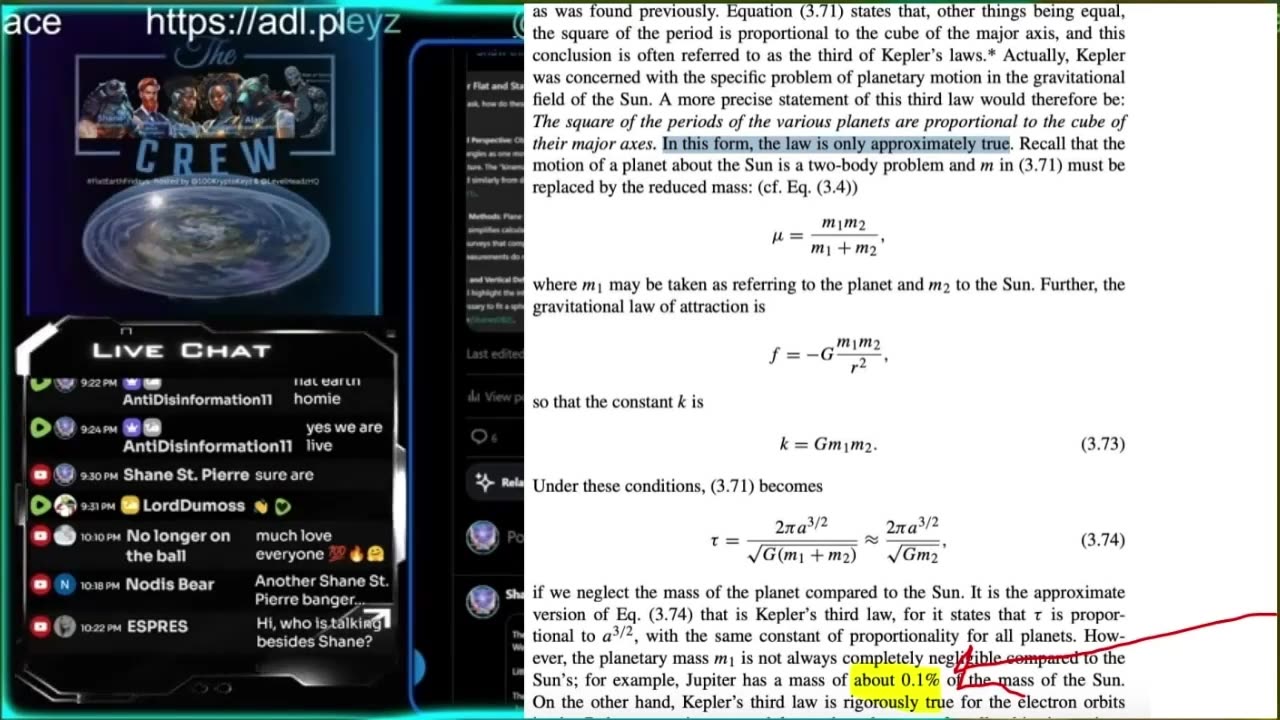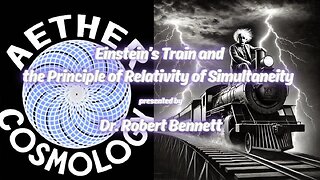Premium Only Content

Gravity Completely Explained by Flat Earthers
Gravity Completely Explained by Flat Earthers
In a toroidal electromagnetic Earth model, the forces governing our environment are believed to be a result of pressure mediaton involving electrostatics and electromagnetism. Pressure mediation governs the dynamics. Forces such as electrostatics and electromagnetism manage pressure mediation, with voltage acting as the pressure element.
The pressure mediation is maintained by the voltage gradient created by the Earth's potential negative charge and the positive atmospheric charge, leading to a state where the ground discharges and the sky charges, or a state of seeking equilibrium in an ever increasing pressure mediation struggle.
Despite the variance it's possible to derive this acceleration kinematically. We use the formula a=2h/t^2
substituting a with the gravitational acceleration g as needed.
This approach allows for on-the-spot calculations of acceleration based on height, time, and speed, which we plan to utilize extensively going forward.
Historically, Newton posited mass as the agent causing this downward acceleration and the movement of celestial bodies, providing a kinematic equivalence and asserting mass as the dynamic cause of gravity – the mysterious force influencing the celestial heavens. However, some argue that Newton's approach was flawed, suggesting there's no need for mass in these equations because it ultimately cancels out
The concept of massless universal gravitation is challenging; this viewpoint persisted until the Michelson-Morley experiment and the subsequent development of special and general relativity by Einstein, which fixed the mistake of the Newtonian framework not Lorenz contracting to mathematically invert the world around them when the earth refused to move.
The alternative proposed mechanism for gravity—instead of mass attracting mass based on celestial observations—is the natural downward gradient observed in the structure of atoms and gases. This gradient is observable in the structure of atoms and gases, where denser atoms exhibit greater electrostatic potential. It's argued that the more electrostatic potential an atom has, the denser it is.
This is also seen in the atmospheric voltage gradient, which can be demonstrated using a Van de Graaff generator. The ground, with a negative charge, and the sky, with a positive charge, create a downward vector. Although this vector's magnitude might be small, the consistent direction points downwards. The actual work of what is traditionally termed 'gravity' is performed by density and buoyancy, along with other forces that maintain equilibrium and pressure mediation.
Pound, R. V. and G. A. Rebka (1960). "Apparent Weight of Photons." Physical Review Letters 4(7): 337-341.
Pound, R. V. and J. L. Snider (1965). "Effect of Gravity on Gamma Radiation." Physical Review 140(3B): B788-B803.
Zavala, Z. (No date). How Incoherent Electrostatic Acceleration Creates The Downward Vector (DITRH Version) [PDF document]. (How I
-
 2:58:47
2:58:47
Anti-Disinfo League
4 days agoAether Round Table 59: Einstein's Train and Relativity of Simultaneity ft @robertbennett3617
697 -
 LIVE
LIVE
Tate Speech by Andrew Tate
6 hours agoEMERGENCY MEETING EPISODE 93 - ME TOO!
4,773 watching -
 LIVE
LIVE
FRENCHY4185
1 hour agoPRESTIGE AND CAMO GRIND : BLACK OPS 6
560 watching -
 1:29:47
1:29:47
Real Coffee With Scott Adams
2 hours agoCoffee with Scott Adams 11/24/24
5.89K6 -
 13:52
13:52
Hershberger's Kitchen
13 hours agoTwo Delicious Dip and Spread Recipes to Try, Inspirational Thought
1.27K1 -
 LIVE
LIVE
Sacred Sage
4 hours agoDaz3D: Attempting to Finish Zoe Conversation!
99 watching -
![[Stream #19 ] Gaming, Chatting, you know the drill!](https://1a-1791.com/video/s8/1/9/o/E/e/9oEeu.0kob-small-Stream-Sour-Pickle-100-Foll.jpg) LIVE
LIVE
OneRandomDolly
2 hours ago[Stream #19 ] Gaming, Chatting, you know the drill!
474 watching -
 11:07
11:07
TimcastIRL
1 day agoElon Musk Suggests He’ll BUY MSNBC, Joe Rogan Will REPLACE Rachel Maddow
38.8K45 -
 34:24
34:24
The Rubin Report
20 hours agoFormer CEO: The Aftermath of Vice Media & What's Next for Mainstream Media | Shane Smith
58.2K12 -
 DVR
DVR
tacetmort3m
1 day ago🔴 LIVE - BECOMING THE UNTOUCHABLE (RADIATION WHO?) - STALKER 2 - PART 3
17.1K3